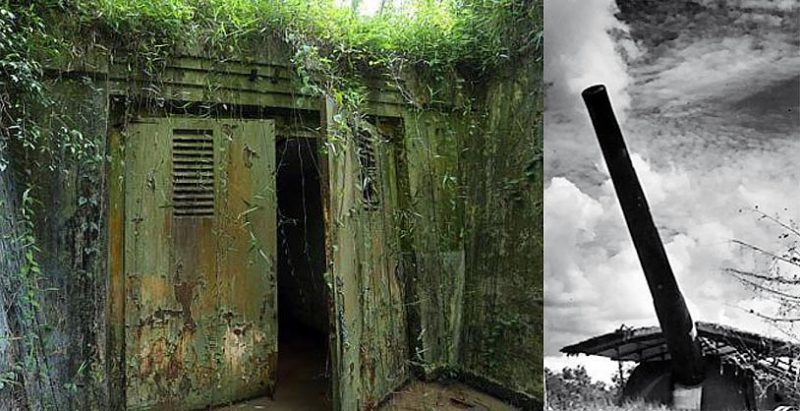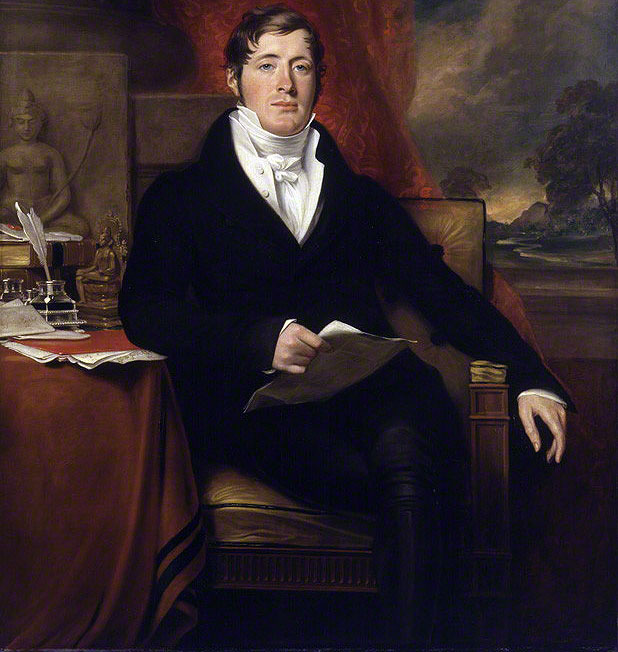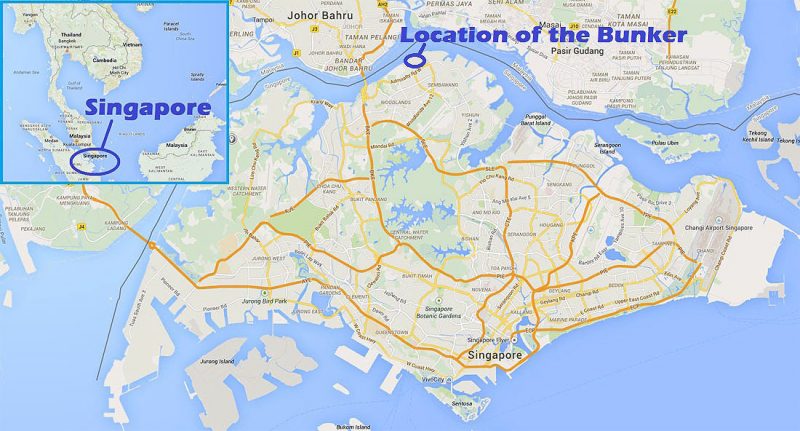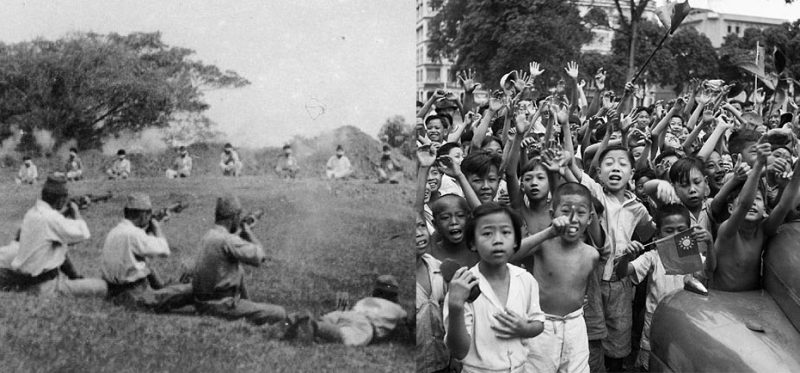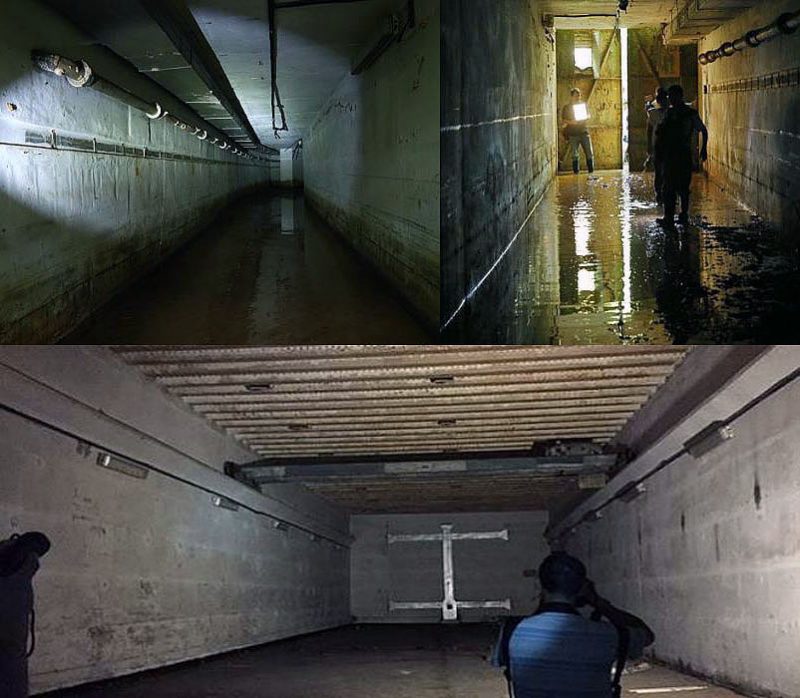Images Used (From left): (1) The entrance of the last surviving WWII British bunker located at Attap Valley in Woodlands in northern Singapore (2) One of Singapore’s heavy 15 inch coastal defense guns about to fire on December 8, 1941.
The history of British rule over Singapore has its roots in the Napoleonic Wars fought by French Emperor Napoléon Bonaparte against a cluster of European powers between 1803 and 1815. Java island of Indonesia remained part of the Dutch Republic throughout French Revolutionary war and during the Napoleonic Wars. The French then invaded the Dutch republic in 1795 and Kingdom of Holland was annexed to the French Empire in 1806 including Java. Due to conflict with the French empire, the British forces invaded Java in 1811 and Sir Stamford Raffles was appointed Governor of the island. The British Empire returned Java to the Dutch in 1814 according to a Treaty called the Treaty of Paris. British East India Company had removed Raffles from his post on account of poor financial records ahead of the handover of Java.
Image Used: An 1817 illustration of Sir Stamford Raffles, founder of the city of Singapore
Raffles returned to England and in 1816 and wrote a book ‘The History of Java’. He was knighted in 1817 and appointed as Governor General of Bencoolen city (now Bengkulu) on the west coast of Sumatra in the same year. He landed in Singapore in 1819 to set up a trading port. The British outpost was initially threatened by the Dutch Government. But it was made clear that the British would not give up the island. By 1822, Singapore grew rapidly as an important trading post.
Image Used: Map showing location of Woodlands in northern Singapore. Courtesy- Google Maps
British possession of Singapore was cemented by the Anglo-Dutch Treaty in 1824. The two colonial powers carved up the Malay Archipelago between themselves. The region north of the Straits of Malacca, including Malacca, Singapore and Penang, was specified as the British controlled zone, while the region south of the Straits was designated as the Dutch sphere of influence. The Straits Settlements under British control became a subdivision of the Bengal Presidency of the British India in 1830 and remained so until 1867. British Malaya was formed in the 1870s and Singapore became one of the most important ports in the world.
After the WWI, British Government spent a lot of resources to build a naval base in Singapore to counter the threat of an increasingly aggressive Japanese Empire. The construction work of the naval base proceeded slowly between 1923 and 1931. Japanese forces attacked Manchuria in 1931 and the construction works of Singapore Naval base speeded up. It was completed in 1939 at a large cost of $500 million or £331 million. It was then the third largest floating dock and the largest dry dock in the world. It had enough fuel tanks to support the entire British Navy for 6 months. However, Singapore was a British naval base without any British fleet as the British could not afford to build a second fleet to protect its Asian interests. The plan was to send the home fleet quickly to Singapore in case of an emergency. Eventually, when WWII broke out in 1939, the British fleet was completely occupied with defending its homeland.
Heavy 15 inch naval guns and Royal Air Force squadrons stationed at Tengah in western Singapore defended the port nicknamed ‘Gibraltar of the East’. In response to continued Japanese atrocities in China, the Allies had imposed a trade embargo on Japan.
Japan simultaneously attacked Pearl Harbor and eastern coast of Malay in December 1941 and triggered the WWII Pacific War to capture the rich supply of natural resources. Japanese forces landed in northern Malaya and carried out daily air raids on Singapore and Malaya. Even civilian structures, shop-houses, hospitals and other structures were targeted during the raids with casualties ranging from tens to hundreds of people on each occasion. Yet, the Allied forces were confident that the ‘Fortress’ like defenses of Singapore would withstand any Japanese invasion. Within 55 days of starting the invasion, the Japanese forces conquered the entire Malay Peninsula and were preparing to attack Singapore. A British squadron of two battleships and an aircraft carrier suffered heavy defeat, worst in WWII British Naval history. The carrier ran aground en route and the two battleships were sunk by Japanese bombers and torpedo bomber aircraft. After over 88 Japanese aircraft had engaged in sinking the 6 Allied Naval vessels, Japanese forces quickly forced the Indian units defending the coast to surrender.
Allied infantry in Malaya were proved weak against the Japanese light tanks, while the Allied forces did not have any tanks at all as they considered tanks as unsuitable in the tropical rainforest. Japanese forces also used the bicycle infantry in the invasion that allowed them swift movement through the forest. In the Malayan Campaign, the Allies had 140,000 men and 158 aircraft. On the other hand, Thai forces joined with the Japanese forces by December 1941 and they had total 70,000 men, 500 aircraft and 200 tanks. By the end of Malayan Campaign on January 31, 1942, the Allies lost 5,500 men with 5,000 more wounded and 40,000 men were captured. The Japanese forces lost 1,793 men and 3,378 more were wounded.
The Japanese attacked the Allied stronghold of Singapore on February 8, 1942. There were about 70,000 front line allied soldiers divided into 13 British, 17 Indian, 6 Australian, 2 Malayan, 3 machine gun battalions. Newly arrived British 18th Infantry Division also boosted them. The Allies had total 85,000 British, Indian and Australian combatants. On the other hand, the Japanese had 36,000 troopers. The superiority of Japanese aircraft, artillery and military intelligence soon began to come into play. Within a week, by the morning of February 15, 1942, the Japanese had broken through the last line of Allied defense. The Allied forces had been running out of food and ammunition and they had to surrender unconditionally. It was the largest surrender of British-led forces in history. 5,000 Allied soldiers were killed or wounded and 80,000 became prisoners of war, many of the prisoners died in captivity, thousands of others were shipped out in ‘hell ships’ to other parts of Japanese held territories to be used as forced labor. 1,713 Japanese soldiers were killed and 2,772 more were wounded.
Images Used (From left): (1) Japanese soldiers shooting blindfolded Sikh Prisoners of War during the Japanese occupation of Singapore from 1942 to 1945, the Allies deployed total 85,000 British, Indian and Australian combatants in Singapore during WWII (2) A cheering crowd welcoming the return of British forces in Singapore in 1945, relieved due to the end of brutal Japanese occupation
Singapore was occupied by the Japanese from 1942 to 1945 and renamed Syonan-to or ‘Light of the South Island’. Harsh measures were taken against the local population, especially against the Chinese civilians, by the Japanese forces during the occupation. Between 25,000 and 50,000 people were executed in Malaya and Singapore. After the Japanese surrender to the Allied forces on August 15, 1945, British forces returned to Singapore to receive official surrender of the Japanese forces in the region.
Sunday edition of Singapore based daily newspaper The Strait Times reported on the last surviving 1942 British bunker located at Attap Valley in Woodlands in northern Singapore. The bunker is the last of the six others from the Armament Depot of the British Naval Base during the Second World War. Ammunition and explosives were stored in it during the WWII. In January 2015, the Singapore National Heritage Board (NHB) has included the bunker to be one of the six new guided tours under the Battle for Singapore project commemorating Singapore’s fall to the Japanese forces 73 years ago and its liberation from them 3 years later.
The structure is about the size of two five room Public housing flats (around 1,100 square foot each) in Singapore. The bunker was known as ‘Magazine Number 4’ and was part of a network of 7 underground bomb proof depot for the British forces to store their weapons and ammunition. Heritage Board was informed about the existence of the bunker in 2014. Singapore became Independent from the United Kingdom in 1963 but the British troops were not withdrawn immediately due to Britain suspected the region could become a refuge for communism. In 1968, Britain declared to withdraw its forces from Singapore by 1971. Singapore Ministry of Defense took over the site after the withdrawal of the British in 1971. The bunker was decommissioned in 2002 and handed over to the Singapore Government.
Images Used (Clockwise from top left): (1) The mud filled tunnel that leads to the bunker (2) View of doors from inside the shadowy bunker (3) Interior of the WWII bunker
According to NHB, eight English and two Chinese tours of the WWII Armament Depot and a separate exhibition of the artifacts had been scheduled to be conducted in February 2015. The bunker is nestled in a dense forest in Woodlands that comes with a coastal view of Johor Bahru in southern Malaysia. The ammunition from the depot supported the operations carried out by British Naval Base nearby during WWII till 1942. Later, the Japanese forces also stored their ammunition including rifles and anti-aircraft weapons. A trek though muddy water, a careful navigation across creeping vines and vegetation is required to reach the bunker that lies behind two large doors made of steel. A pool of water, with small fishes in it, has to be crossed to get to the shadowy facility.
Alvin Tan, NHB’s group director of policy, said that they hoped that Singaporeans would get to learn more about WWII history and remember the wartime resilience, bravery and sacrifices of soldiers, civilians and Prisoners of War through these activities.
Video Used: A documentary on WWII Battle of Singapore
